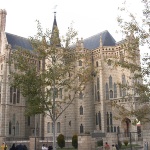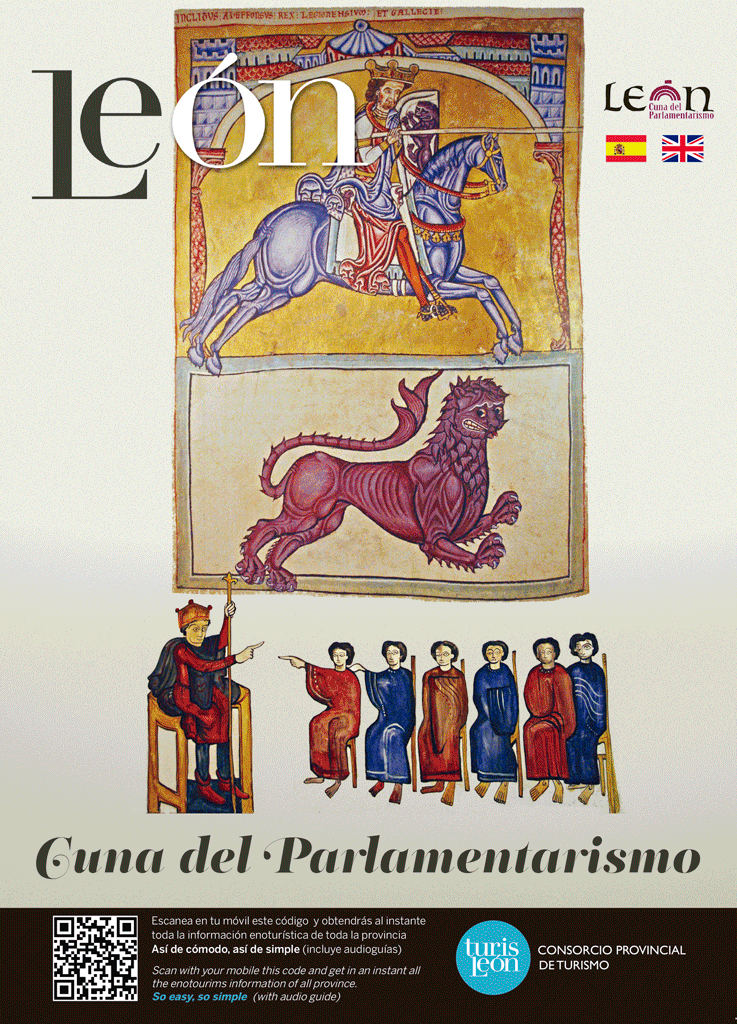Palacio Episcopal
Region: Montañas del Teleno
City: Astorga
BIC date: 24-July-1969
The old Episcopal Palace dated back to Doña Urraca’s times, who had donated to Bishop Don Pelayo in 1120 a site within the walled enclosure. In 1886, a fire devastated the building. It was the diocese of Astorga, whose head was the Bishop Juan Bautista Grau y Villaespina that undertook the construction of a new palace. The bishop’s Catalan origin was an influence in choosing the also Catalan architect Antoni Gaudí, who envisioned a Gothic building in 1887.
The work began in 1889, and it was brought to a halt in 1893, upon Bishop Grau’s death. Gaudí’s discrepancies with the new Diocesan Review Board made him abandon the work, when the upper floor and the roofs still needed to be rounded off.
The following architects respected the initial outlines to a considerable extent, until its completion in 1913. In 1943, the place was restored and new elements were added, such as a fence and a moat that were an attempt to blend the ideas of castle and palace. The termination of all works did not take place until 1961.
It faces Southeast to Northwest, and its Northeast side lies on the old wall. It is a Modernist building of Neogothic style that follows the guidelines from the end of the 19th century.
It contains four façades, surrounded by a moat, with circular turrets in each corner and two main protruding parts: the entrance portico with convex arches, and the Chapel’s apse, of Gothic style. Three of the turrets have the same size, except the one facing North, whose diameter is bigger since it contains the spiral staircase that connects all the floors inside.
Varnished bricks from the not distant town of Jiménez de Jamuz were used for pillars and arches. Outside, granite from El Bierzo was deployed, acquiring a beautiful greyish hue. Three zinc angels with the episcopal attributes, alluding to Bishop Grau and designed by Gaudí to round off the roof, lie at the yard surrounding the palace. This is so because they could not be put in the right place, since Gaudí never explained how to do it once he abandoned the work.
Some of the features are the lighting on the floors and the elements used for this purpose: from the moat that lightens up the basements, to the radiant stained-glass windows at the upper floors. Inside the building there are rooms for the Bishop’s use (the Gala Banqueting Hall, the Throne Room, the main office, etc.) and a magnificent chapel, reproduction of a small Gothic temple with a marble altar from Carral.
This castle, temple and manor villa houses the Museo de los Caminos (“Museum of the Routes/Trails”), showcasing a sample of Roman epigraphy and medieval sculpture.
USEFUL DATA
Address: Plaza Eduardo de Castro, s/n Astorga CP: 24700
Phone number: (+34) 987616882
Opening hours: possible visit at the Museo de los Caminos.
- Tuesday through Saturday from 11 AM to 2 PM and 4 to 6 PM
- Sundays and holidays from 11 AM to 2 PM
- Closed on Mondays, even on holidays.
Price:
- Individual: €1.5
- Groups: €1.2
- There are no free days.
- Combined fare with the Cathedral’s Museum:
- Individual: €2.4
- Groups: €1.8

